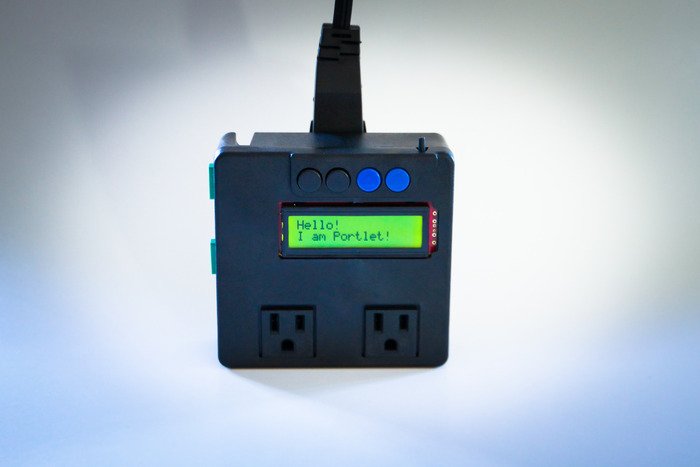
Making Yoghurt with a Portlet
🛠️ Dive into our collection of DIY Kits, 🔊 Audio Amplifiers, Digital Scoreboards, FM transmitters, and more! 🎶 Explore endless possibilities at our new store.

🛠️ Dive into our collection of DIY Kits, 🔊 Audio Amplifiers, Digital Scoreboards, FM transmitters, and more! 🎶 Explore endless possibilities at our new store.
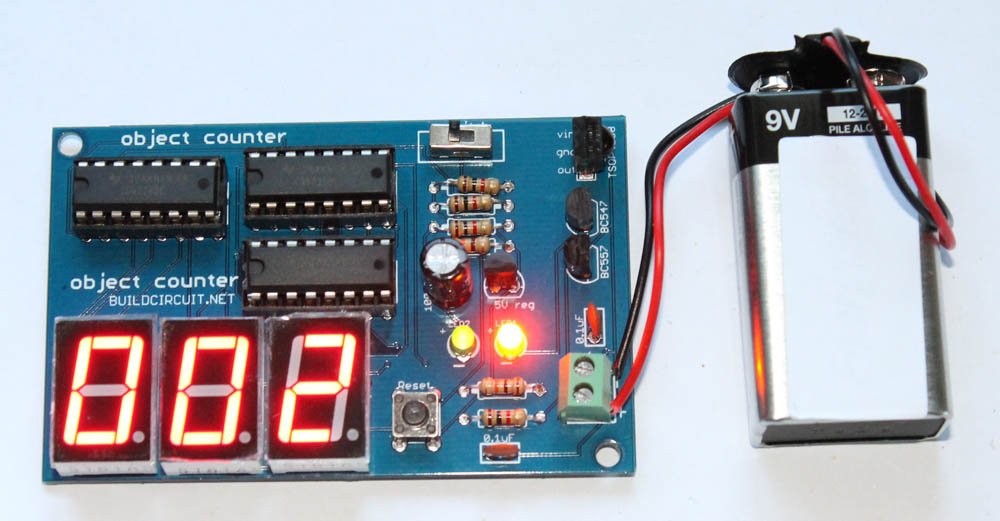
An up counter simply counts from 0 to 9. We can use this circuit to make digital object counter. This circuit can also be used to make a digital clock.

555 timer configured in monostable mode is a simple automatic dark sensor circuit that gives output when light falling on LDR is blocked.

For the circuit to work as light operated musical bell, we need to connect the SW1- switch to N/C terminal of relay. LDR has to be kept in a dark case.
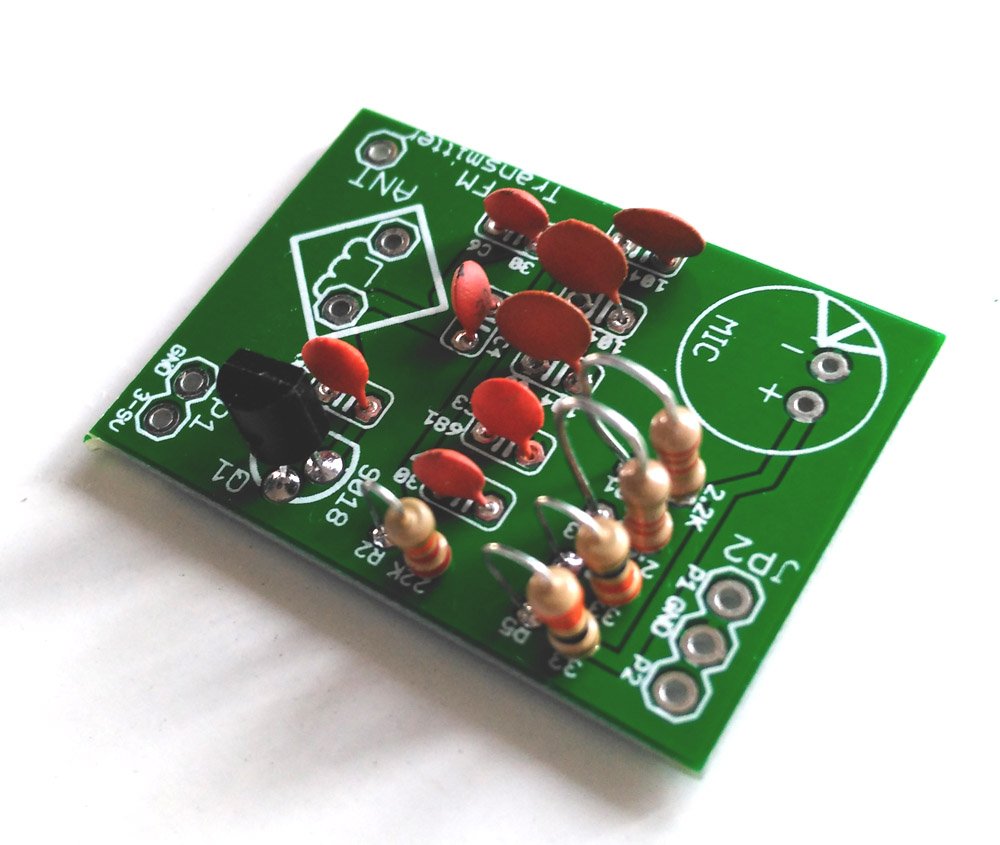
A dark sensor can be converted to a simple FM transmitter using the following components. This FM transmitter is very sensitive and it has transmitting range of 30 meters.

When the phone line is in idle condition (on hook), the full voltage of 48V DC from the exchange appears across the line. When the phone is engaged by lifting the hand set, the voltage across the line falls down to around 12V. Thus, under idle condition (48V), VR1 is adjusted to give a positive biasing voltage to the base of Q3. As Q3 conducts Q1 gets into reverse bias and stops conduction. If the phone is engaged, Q3 stops conducting due to voltage drop across the lines, and subsequently, Q1 and Q2 starts oscillating and beeping is heard. Thus, this circuit can be used as an indicator for telephone tapping and misuse by an unauthorized person.

An automatic dark sensor can be made using a PNP transistor(BC557).

In this case, LDR has been replaced with capacitor C1-0.01uF and resistor R3-1K has been replaced with L1 & VC1. In place of a LED, a Piezo Diaphragm has been kept.
We just need to add inductor, capacitor and a piezo diaphragm to convert a dark detector to an AM radio.

This circuit has been configured in Astable mode. The output pulses are determined by the values of resistors R1, R2 and the timing capacitor C1. The formula for the frequency of pulses is: f= 1.44/[(R1+2R2)*C1].
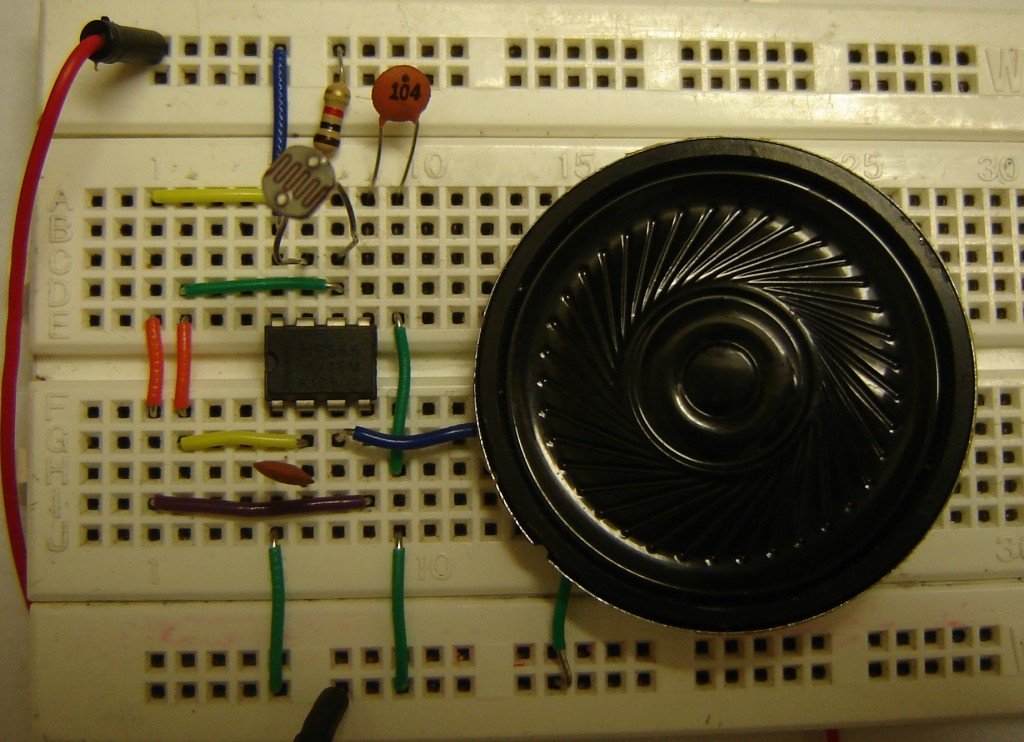
One of the main objectives of LDR Engineering projects is to make students capable of developing their own logic for making devices. Here is an example that tells how LDR Engineering helps in developing ideas.

There are 3 pins/terminals on a preset. The maximum resistance that a preset can provide is written on it. If 100K is written on preset, it means that we can vary its resistance from 0 Ohm to 100K. A movable metal is rotated in clockwise or anticlockwise direction that changes the resistance of preset.
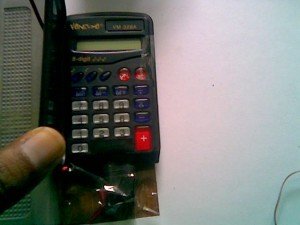
To make an object counter we can use a simple dark detector circuit and a normal calculator. Pole and NO (Normally Open) terminals of a relay have to be connected to the two pins which are used to activate ‘=’ key of calculator.
As we block the light falling on LDR, the calculator starts counting.
For the calculator to work as a counter, we first need to press ‘1’ and ‘+’ keys.
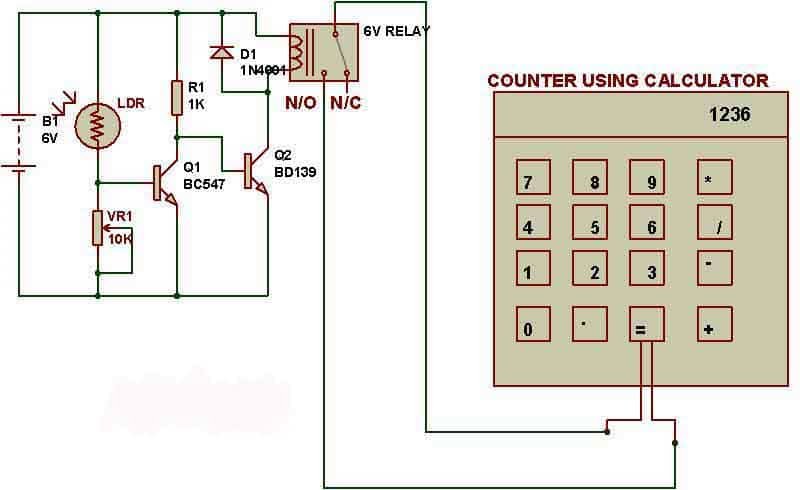
To make an object counter we can use a simple dark detector circuit and a normal calculator. Pole and NO (Normally Open) terminals of a relay have to be connected to the two pins which are used to activate ‘=’ key of calculator.
As we block the light falling on LDR, the calculator starts counting.
For the calculator to work as a counter, we first need to press ‘1’ and ‘+’ keys.
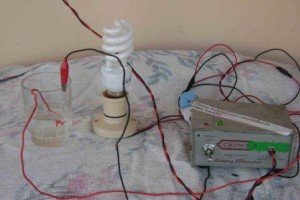
We can use the logic of making an automatic light detector to make a simple water level indicator.We just need to remove LDR from the circuit and put the wires into water, then it simply works as water level indicator. There is a specific resistance between the wires that are dipped into water and conduction of electricity through water gives biasing voltage to base of transistor.
The sensitivity can be adjusted using VR1. Put 470K variable resistance in VR1.
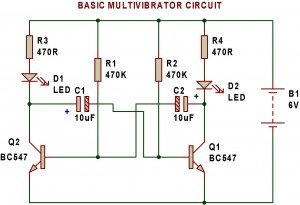
A multivibrator is an electronic circuit used to implement a variety of simple two-state systems such as light
emitting diodes, timers and flip-flops.
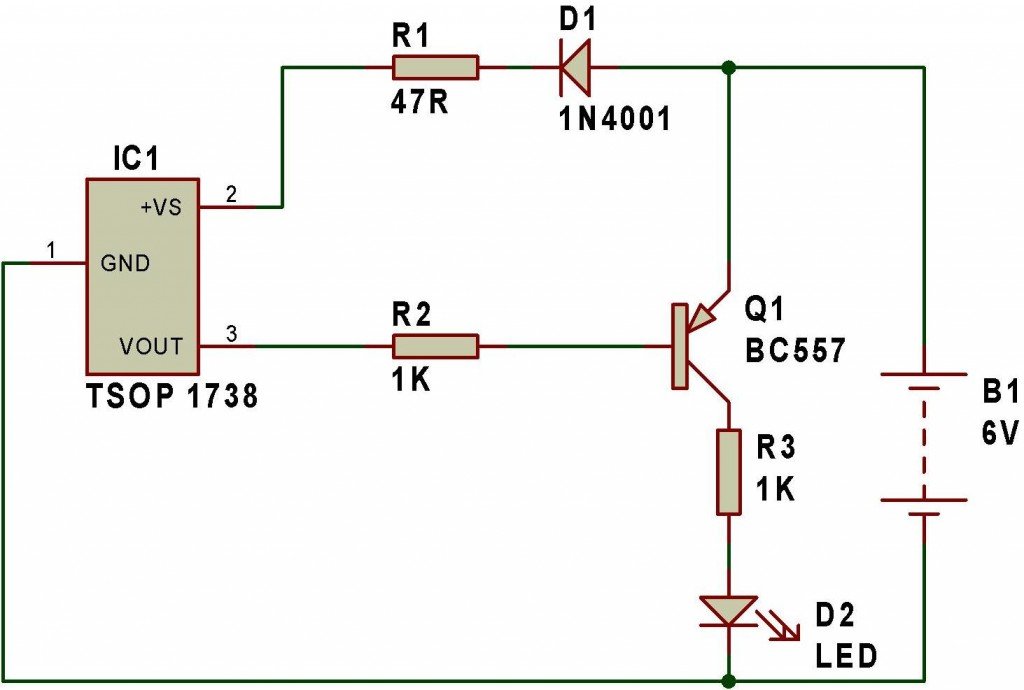
Remote tester circuit also resembles the logic of a “dark sensor (using BC557)”. LDR has been replaced with IR sensor TSOP 1738. The circuit works as a remote tester. Pressing a remote control switch near the IR sensor, switches on the LED D2.

This 555 timer circuit below toggles the LED when a button is pressed. Pins 2 and 6, the threshold and trigger inputs, are held at 1/2 the supply voltage by the two 10K resistors.
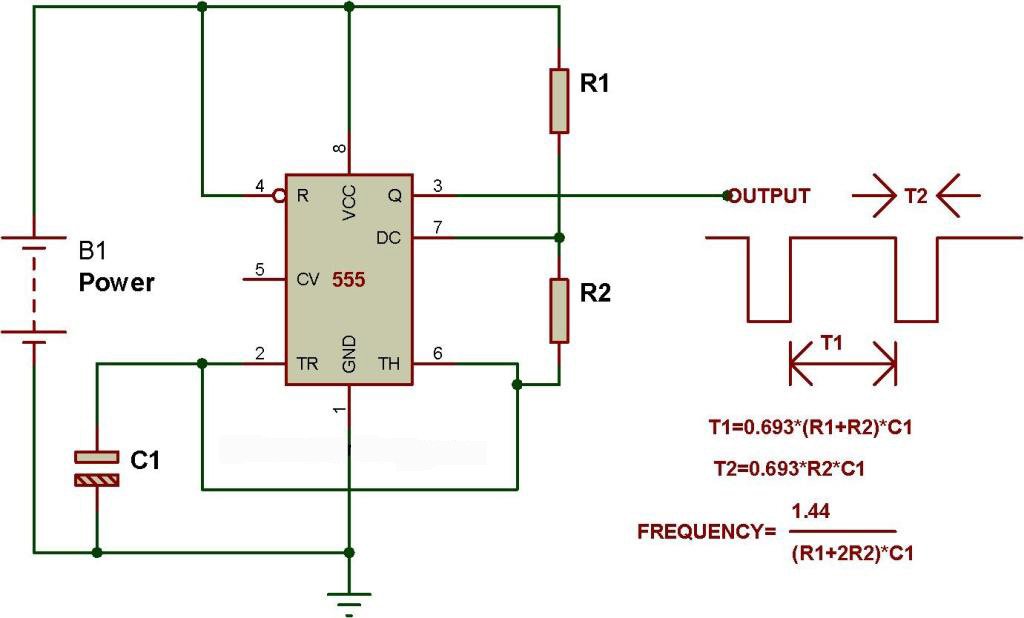
This circuit has been configured in Astable mode. The output pulses are determined by the values of resistors R1, R2 and the timing capacitor C1. The formula for the frequency of pulses is: f= 1.44/[(R1+2R2)*C1].
The high and low time of each pulse can also be calculated.
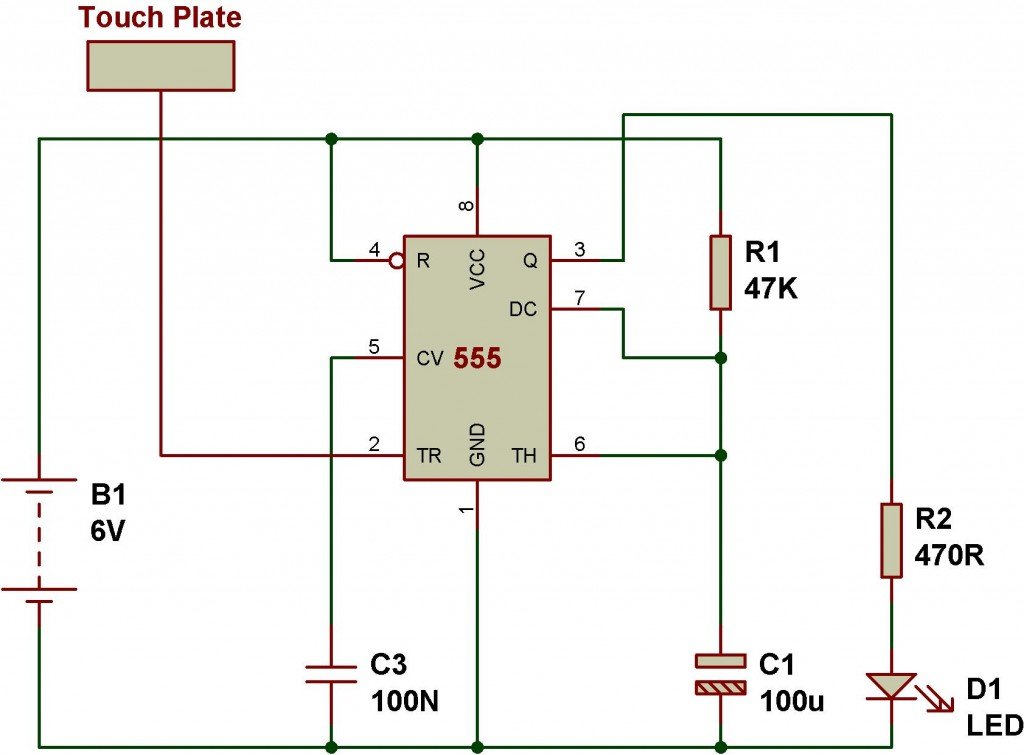
Monostable mode of operation
Monostable mode of operation of 555 IC can be explained using a simple touch sensitive circuit. Here, timing constant (T) of monostable timer= 1.1*R1*C1. The following circuit has been configured in monostable mode. A monostable circuit produces a single pulse(for a certain duration determined by the Timing Constant(T)=1.1*R1*C1) when triggered at pin 2.
